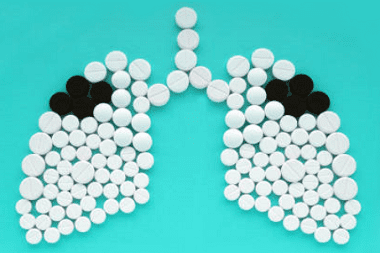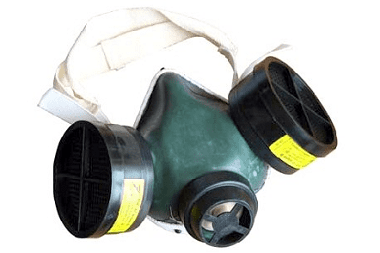Respiratory system >>>> Pneumoconiosis destroys the lungs
Pneumoconiosis destroys the lungs.

There are a number of respiratory diseases that are not associated with infection but result in lung loss. Pneumoconiosis (synonym: diffuse pulmonary fibrosis) develops when dust of various origins gets into the lung tissue and causes fibrosis of lung tissue - replacement of healthy lung tissue with connective tissue.
When they talk about pneumoconiosis, they mean dust of inorganic origin, while dust from wool, cotton, flax or dust of another similar origin differs in its composition from inorganic and causes allergic alveolitis, resembling bronchial asthma , but not pneumoconiosis.
Pneumoconiosis by the type of inhaled dust is divided into:
- Silicatosis - when working with asbestos, gypsum, talc, cement;
- Carboconiosis - when working in coal mines, with soot, graphite;
- Metalloconiosis - when working with aluminum, beryllium, iron, barium, tin;
- Sucrose - when working in the sugar industry;
- Silicosis - by inhalation of quartz dust;
- Mixed forms of dust.

Silicosis is considered the most dangerous, since the most aggressive in its chemical composition is dust containing silicon oxide. In addition, the depth of dust penetration into the lungs is affected by the degree of its dispersion. The larger the dust particles, the easier it is for the body to remove them through the mucolytic apparatus. The most dangerous particles are 1-2 microns in size.
Dust particles trapped in the lungs are captured by macrophages, cells responsible for the safety of the body and are the first line of defense of the immune system, but macrophages die, because their lysosomal membranes are disrupted and the lysosomal enzyme enters the cytoplasm of the macrophage itself, causing its "self-digestion". The macrophage dies, and the next macrophage captures the dust particle and the process repeats over and over. The immune system begins to produce new immune agents to cleanse the lungs, but at the same time, immunological disorders occur that stimulate fibroblasts and collagen formation, which changes the structure of the lung tissue to fibrous. Fibrous nodules are gradually formed, consisting of a group of cells and dust particles along the periphery.
Fibrous nodules formed in large quantities speak of a nodular form of pneumoconiosis, but there is also an interstitial form of pneumoconiosis, when the nodules are still absent or their number is insignificant. Both forms of pneumoconiosis are accompanied by emphysema (focal or total).
Studies of the structure and process of formation of nodular fibrosis in the lungs give reason to draw parallels with the formation of tuberculous granuloma with the participation of mycobacterium tuberculosis.
The signs of pneumoconiosis, or in particular the symptoms of silicosis, are manifested as:
- Shortness of breath during exertion,
- Cough,
- Pain in the chest area (constricting, pressing),
- The phlegm is profuse and often purulent,
- General weakness,
- Subfebrile temperature is possible,
- Wheezing when breathing,
- Radiography shows opacification (interstitial, nodular, nodular),
- In the case of an advanced pathological process, the development of symptoms of respiratory failure is possible.
The therapy does not have any generic drugs for the treatment of pneumoconiosis. A good result is provided by the use of proteolytic enzyme preparations: himonsin, chymotrypsin, trypsin. They contribute to the evacuation of sputum, suppress inflammation and bronchial obstruction. Enzymatic drugs of the hyaluronidase group (ronidase, lidase) increase tissue permeability and improve the effectiveness of other drugs. It has been observed that enzymes inhibit pulmonary fibrogenesis. In treatment, bronchodilators are also used, and in some cases, antihistamines are used.
Along with drug therapy, physiotherapeutic methods of treatment are used: oxygen therapy, electrophoresis, ultrasound.
The prognosis for the treatment of pneumoconiosis is poor, since regression of the disease is extremely rare, even in the absence of contact with dust.
Pneumoconiosis is dangerous both by itself and by possible complications: pneumonia, bronchial asthma, bronchiectasis, tuberculosis, spontaneous pneumothorax, malignancy of the lung tissue.
Prevention of pneumoconiosis is aimed at using professional protective equipment when working in dusty conditions - special respirators, reducing the duration of the working day, conducting regular X-ray of the lungs for the timely detection of signs of the onset of the disease.

Read

Read



























